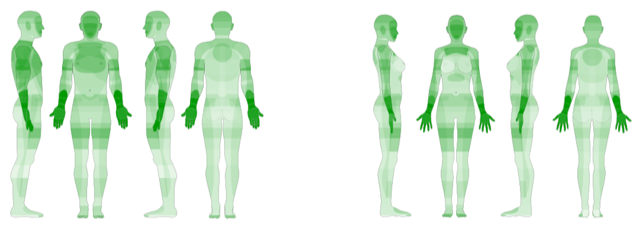UBICOMP / ISWC 2021
VIRTUAL TUTORIALS
These 2 tutorials will be held as part of the UbiComp / ISWC 2021 virtual conference:
Deep Learning for Human Activity Recognition
ORGANIZERS
Marius Bock (University of Siegen, Germany),
Alexander Hölzemann (University of Siegen, Germany),
Michael Moeller (University of Siegen, Germany),
Kristof Van Laerhoven (University of Siegen, Germany)
TUTORIAL SUMMARY
Physical activities play a crucial role in the way we structure our lives. Which activity, and how it is performed, can reveal a person’s intention, habit, fitness, and state of mind; it is therefore not surprising that a range of research fields, from cognitive science to healthcare, display a growing interest in the machine recognition of human activities. In 2014, Bulling et al. designed and organized an exceptionally well-received tutorial on human activity recognition from wearable sensor data. They introduced concepts such as the Activity Recognition Chain (ARC), a framework for designing and evaluating activity recognition systems, as well as a case study demonstrating how to work with this ARC. Within the last decade, deep learning methods have shown to outperform classical Machine Learning algorithms. We argue that releasing an updated tutorial that is adapted to work with deep learning techniques is long overdue.
This tutorial introduces the Deep Learning Activity Recognition Chain (DL-ARC), which encompasses the advances that have been made over the years within the field of deep learning for human activity recognition and deep learning. Our work directly ties into the works of Bulling et al. and functions as a step-by-step framework to apply deep learning to any activity recognition use case. Within this tutorial, we will show how state-of-the-art models can be achieved, while along the way explaining all design choices in detail.
This tutorial functions as a guide in the typical processes to design and evaluate deep learning architectures, once a human activity dataset has been recorded and annotated. We show through code snippets in a step-by-step process why certain steps are needed, how they affect the system’s outcome, and which pitfalls present themselves when designing a deep learning classifier. Participants do not need prior knowledge in human activity recognition or deep learning techniques, but should be familiar with programming in Python.
Schedule
09:30-11:00 Introduction and theoretical background
11:00-15:00 The DL-ARC pipeline
15:00-17:30 Improving the predictive performance
Schedule across time zones:
| PDT | EDT | CEST | JST | |
| Session 1 | 26th Sept 06:30-11:00 | 26th Sept 09:30-14:00 | 26th Sept 15:30-20:00 | 26th Sept 22:30-03:00 |
| Session 2 | 26th Sept 11:00-14:30 | 26th Sept 14:00-17:30 | 26th Sept 20:00-23:30 | 27th Sept 03:00-06:30 |

| PDT | EDT | CEST | JST | |
| Session 1 | 25th Sept 06:30-11:00 | 25th Sept 09:30-14:00 | 25th Sept 15:30-20:00 | 25th Sept 22:30-03:00 |
IMPORTANT DATES
Virtual Conference:
September 21-26, 2021
Tutorials:
September 25-26, 2021
